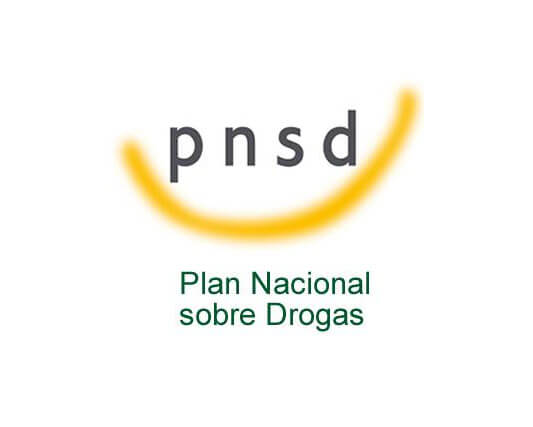New Psychoactive Substances and Predicting Their Effects
Psychoactive substances have been consumed for thousands of years by human beings for spiritual, medicinal, pleasure, productivity, or social reasons. With the evolution of organic chemistry, chemists were able to identify the molecular structure of these compounds and manipulate them to create new substances. These molecules are known as New Psychoactive Substances (NSPs), and are very popular compounds that mimic the effect of compounds that are already illegal and for which the European Union has launched an action plan to control them.
Among the NSPs, one of the most popular groups of compounds are synthetic cathinones, or amphetamine ß-ketone compounds which, due to their chemical similarity to other psychostimulants, produce similar rewarding properties. They have recently appeared on the illegal drug market, hence little information is available on their pharmacological effects. Therefore, it is important to have structure-activity relationship (SAR) studies in order to establish correlations between chemical structures with concrete effects, especially when constant modifications of the chemical structure are leading to the appearance of new synthetic cathinones at an unprecedented rate.
Within this context, Dr Núria Nadal Gratacós recently completed her doctoral thesis entitled “Synthesis and structure-activity relationships of new psychoactive substances. The role of ring substitutions, amino terminal group, and side chain length in the pharmacological role of new synthetic cathinones,” which has been jointly supervised by Dr Xavier Berzosa Rodríguez, with the Department of Chemical Engineering and Materials Science at the IQS School of Engineering, and Dr Raül López Arnau, with the Department of Pharmacology, Toxicology, and Therapeutic Chemistry in the Faculty of Pharmacy at the University of Barcelona.
Relationships between different synthetic cathinones and their activity
To establish the desired structure-activity relationships, Dr Nadal first obtained and characterized seventeen synthetic cathinones and grouped them into three families based on amino group, aromatic ring substituents, and aliphatic side chain length.
Subsequently, the mechanisms of action – in vitro and in silico – and the effects on behaviour – psychostimulant properties, anxiety-like properties, and rewarding properties – of the three synthesized families were studied, demonstrating that N-ethyl substituted cathinones have a higher dopamine transporter (DAT) inhibition potency than their N-methyl analogues. In addition, the presence of aryl substitutions increased the potency in inhibiting the serotonin transporter (SERT). Some of the cathinones studied have also shown hybrid properties, acting as DAT blockers and serotonin releasers. Different effects were also observed depending on the position of the aromatic ring substituents. Referring to the length of the aliphatic side chain, its elongation also caused an increase in neurotoxicity in vitro.
Most cathinones are capable of inducing reward at low doses, indicating a high likelihood of abuse and making them consistent with the high DAT/SERT ratios observed in vitro. Anxiogenic effects were observed after acute administration of 10 or 30 mg/kg for most of the studied α-pyrrolidinovalerophenones and N-ethyl-hexedrone (NEH) derivatives, supporting the hypothesis that dopaminergic mechanisms are involved in some aspects of anxiety.
Finally, Dr Nadal studied the ability of cathinone gaps to induce neuroplasticity, as well as the activation of certain brain areas involved in psychostimulant and reward effects through in vivo studies.
In short, Dr Nuria Nadal’s thesis brings new insights into the effects of new synthetic cathinones that have recently appeared on the illegal drug market and helps predict the effects of synthetic cathinones that could appear in the near future.
A portion of the results of this doctoral thesis have been sent to the corresponding health and legal authorities: the European Monitoring Centre for Drugs and Drug Addiction (EMCDDA) and the National Drugs Plan in order to provide scientific evidence for the cataloguing of these substances as controlled substances and to raise the necessary alarm level due to their addictive, neurotoxic, and psychostimulant potential.
The structure-activity studies were carried out in collaboration with the Centre for Psychology and Pharmacology and the Centre for Addiction Research and Science at the Medical University of Vienna.
Related publications
Nadal-Gratacos et al, Structure–Activity Relationship of Novel Second-Generation Synthetic Cathinones: Mechanism of Action, Locomotion, Reward, and Immediate-Early Genes, Front. Pharmacol. 2021, vol. 12.
Nadal-Gratacos et al, Neuropsychopharmacology of Emerging Drugs of Abuse: meta- and para-Halogen-Ring-Substituted α-PVP (“flakka”) Derivatives, Int. J. Mol. Sci. 2022, 23(4), 2226 .
Nadal-Gratacos et al, Structure–Activity Relationship of N-Ethyl-Hexedrone Analogues: Role of the α -Carbon Side-Chain Length in the Mechanism of Action, Cytotoxicity, and Behavioral Effects in Mice, ACS Chem. Neurosci.2023, 14, 4, 787–799.
This thesis forms part of the European NextGenPS project, funded by the European Commission’s Justice programme. It has received funding from the Ministry of Economy and Competitiveness, the Ministry of Science and Innovation/State Research Agency, the National Drugs Plan, and the Government of Catalonia.
RELATED PEOPLE:
RESEARCH GROUP
Chemical Reactions for Innovative Solutions
RELATED PROJECTS
NextGenPS (Farmacovigilancia de sustancias psicoactivas)









